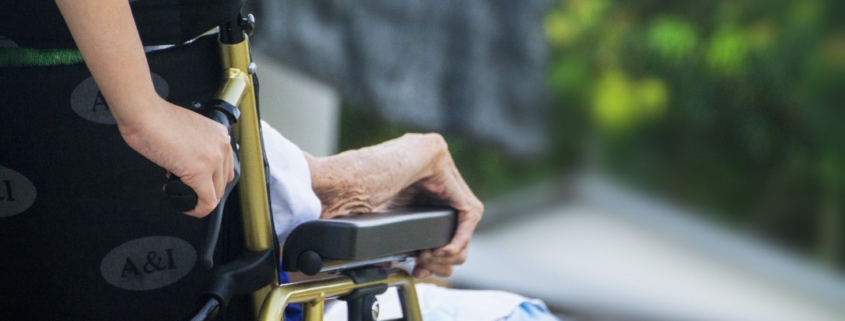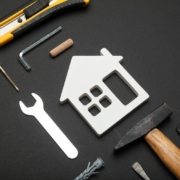Deducting the Costs of Modifications for Senior-Proofing a Home
While Americans may argue about any number of hot-button political topics, there’s no disagreement on one issue: the country’s population is aging…fast. According to the Social Security Administration, 10,000 baby boomers a day are reaching the age of 65. Many individuals, for either themselves or an older family member, are senior-proofing their homes – adding grab bars in showers, modifying stairways, widening hallways to accommodate a wheelchair, and other projects to make the home safer and more accessible for older occupants. If you are planning to make such home improvements, you may be wondering whether any of the costs will be tax-deductible. Good question.
Home modifications and medical expense deductions
Generally, the costs of home improvements are not deductible except to offset home gain when the home is sold. But a medical expense deduction may be claimed when the primary purpose of the home modification is for a medical reason, like senior-proofing. The tax law says that deductible medical expenses are those paid for the “diagnosis, cure, mitigation, treatment, or prevention of disease, and the costs for treatments affecting any part or function of the body.”So, if you are making the modification because you, your spouse, or a dependent has a medical need for doing so, then the modification expense may qualify as a medical expense deduction, but only to the extent that it exceeds any resulting increase in the property’s value. For example, a doctor recommends that a taxpayer with severe arthritis have daily hydrotherapy. The taxpayer has a hot tub installed at a cost of $21,000. A certified home appraiser determined the hot tub addition increased the home’s value by $20,000. The taxpayer’s medical deduction for installing the hot tub will only be $1,000. The other $20,000 of expenses will increase the home’s basis, meaning that it will add to the home’s cost and will offset the sales price when the home is sold.While the tax rules don’t require a prescription from a doctor for most medically related home modifications, the taxpayer, if questioned by the IRS, needs to be able to demonstrate how the expenditure is related to his or her medical care or that of a spouse or dependent. And having a letter from the individual’s doctor that explains the type of modifications that would be medically beneficial would help to prove a medical need.
What if the modification of senior-proofing a home doesn’t increase its value?
Not all improvements result in an increased home value. In fact some, such as lowering cabinets for an occupant confined to a wheelchair, could actually decrease the home’s resale value.The IRS has identified certain improvements as not usually increasing a home’s value and for which the cost can be included in full as a medical expense. These improvements include, but are not limited to, the following items:
- Constructing entrance or exit ramps for the home;
- Widening doorways at entrances or exits to the home;
- Widening or otherwise modifying hallways and interior doorways;
- Installing railings, support bars, or other modifications;
- Lowering or modifying kitchen cabinets and equipment;
- Moving or modifying electrical outlets and fixtures;
- Installing porch lifts and other forms of lifts (but generally not elevators);
- Modifying fire alarms, smoke detectors, and other warning systems;
- Modifying stairways;
- Adding handrails or grab bars anywhere (whether or not in bathrooms);
- Modifying hardware on doors;
- Modifying areas in front of entrance and exit doorways; and
- Grading the ground to provide access to the residence.

Only reasonable costs to accommodate a home to a disabled condition or to an elderly individual are considered medical care costs. Additional costs for personal motives, such as for architectural or aesthetic reasons, are not medical expenses (but could be additions to the home’s tax basis). If you have questions about this, contact your Fiducial representative for more information and/or clarification.
Unfortunately, the total of all medical expenses can be deducted only to the extent that they exceed 10% of the taxpayer’s adjusted gross income (AGI) and only if the taxpayer itemizes deductions. With tax reform’s higher standard deduction, only between 5% and 12% of taxpayers are expected to itemize their deductions in the years through 2025, down from 30% prior to 2018. So, even if a medically needed home improvement is made and qualifies to be a medical expense deduction, only a small percentage of taxpayers will end up with a tax benefit as a result of the expenditure.
All is not lost, though. To the extent that the taxpayer doesn’t claim the expense as an itemized deduction, the improvement costs, including those that might not meet the medically necessary standard, can be added to the home’s purchase cost to determine the home’s tax basis. Thus, when the home is sold, the capital gain from the sale will be lower. So, there is a silver lining.
Either to substantiate the current medical expense deduction improvements or with a future home sale in mind, taxpayers should be sure to keep records of the home improvements they make, including the receipts for the costs.
If you have questions about taxes related to senior-proofing a home or other home improvements made for medical purposes and whether you might benefit, tax-wise, from making those modifications, call Fiducial at 1-866-FIDUCIAL or make an appointment at one our office locations today to speak with a tax specialist.









